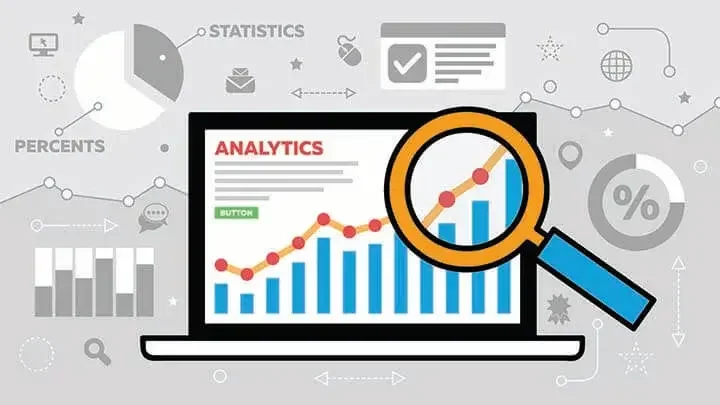A competitive analysis is the best tool to determine what you can do to dominate your market. There are many reasons to conduct one, not the least of which is simply understanding who your competition is and how you can differentiate your business from theirs.
Find out why you should conduct a competitive analysis and how to do so.

Why conduct a competitive analysis?
Analyzing your competition is a key step that new businesses should take, says Carley Johnson, fashion wholesale, and brand launch expert at Unzipped. Competitor analysis is a way to validate a new idea and find a niche in the market. Entrepreneurs "need to know that their product/idea is wanted before investing time and money into design," Johnson says.
"Conducting a competitive analysis can be the difference between success and failure," says Will Ward, CEO of Assistive Listening HQ, who likens a competitive analysis to a football game. "Imagine a football team going into a game without studying their opponents—it would be a disaster."
But a competitive analysis isn't just a pre-launch process. It's just as important for established businesses to perform them as it is for startups.
Use analysis to find new opportunities
Ward says that conducting routine competitive analyses can help you better run your business, by assisting in finding:
- Gaps in the market
- Market trends to tap into
- New product or service offerings
- More customers
"There are three stages in competition analysis," says Ward: Research, analysis, planning.
How to conduct competitive analysis research
In order to analyze your competition and how you stack up, it's important to start by identifying who you're competing against.
There are three types of competitors:
- Primary. Companies that provide the same products and services to the same market. Grocery stores in the same neighborhood would fall into this category, or pizza shops like Domino's and Papa John's, for example.
- Secondary. Companies that sell similar products and services—they may be higher or lower end—but to a different target market. Think Pottery Barn, which sells new fashionable furniture, and Goodwill, which sells used furniture.
- Tertiary. Companies that market to the same audience, but that sell a different product or service. For example, real estate agents and home staging companies or home inspectors. They could be future marketing partners or collaborators.
For each competitor, study how they run the business, including:
- What products and services do they offer?
- Who are their target markets?
- What is their geographic service area?
- What marketing tactics are they using?
- How are their products rated or reviewed?
- When is their busy season, if any?
To gather this information, you may want to visit the companies' websites, check out their social media accounts, request marketing materials, visit their location to assess the physical environment and product selection, and interact with employees to determine their knowledge level and skill.
Alex Azoury, founder and CEO of Home Grounds, recommends keeping it simple. He says, "Set up a table or sheet to enter the information from your research," so you can more easily track and compare all the information you gather and can continue to add to it. List each competitor by name down the left-hand side and add details about their operations in separate columns.
How to analyze competitive research
With background information on each competitor, it's time to start assessing their operations.
Reviewing the details of each company, identify its:
- Strengths. What is the company especially good at or known for? What do its customers appreciate about it? Why do customers buy from it?
- Weaknesses. What are the company's deficiencies? What do customers complain about?
- Competitive advantage. What does it do or have that no other company does?
With each of your competitors' strengths and weaknesses spelled out, now do the same analysis of your own operations.
What are your company's strengths and weaknesses? Finally, how do your strengths and weaknesses line up with those of your competitors?
Do you have strengths that no other company has? Maybe you have more high-profile clients, faster shipping, or a larger inventory?
And what are your unique weaknesses? Are there ways you can minimize or correct them? Could you reconfigure your store layout to add more products, for example? Add part-time employees to supplement your staff during busy times?
Secure a line of credit so that you never run low on hot products due to cash flow issues? Knowing every company's competitive advantage, including your own, puts you in a much better position to effectively market your business.
"Learn from any mistakes they have made," says Johnson. "Read the news, listen to your network, study their activity and it will become apparent."
How to develop a plan
Armed with information about all of your competitors and an understanding of where your company is strong and where it is weak, it's time to develop a game plan. Knowing what your competitors are doing to market their companies, who their customers are, and where they're coming from, you can develop your own plan to improve your business.
- Opportunities. Your opportunities are gaps in the market or competitor's weaknesses that you can address. Are there additional services you can provide customers at little to no charge? Do you have expertise no one else has? Or a brand no one else carries?
- Threats. In addition to finding ways to grow your business, it's also smart to think about how you can protect your business against potential future challenges. These might include new legislation or regulations, reduced access to capital, technology obsolescence, or other social issues, such as a pandemic.
Looking ahead, you might realize you need to add new marketing tactics, like TikTok videos or Instagram posts, to reach your target market. Or maybe you need a more documented client follow-up process to improve communications. Maybe you need to reach out to suppliers to negotiate your costs down, improve margins, or expand your geographic service area.
Develop a plan for your company's success based on what you now know about all the companies competing for your customers' business.
Azoury recommends "one of the easiest ways to stay abreast of your competitor's marketing activities is to follow their social media channels and sign up for their newsletters."
But don't think of competitors analyses as one-time processes. They should be conducted regularly—monthly even, suggests Ward, "so you can do more of what is working and less of what is not."
"A good business is forever evolving and improving its offer," Johnson says.

